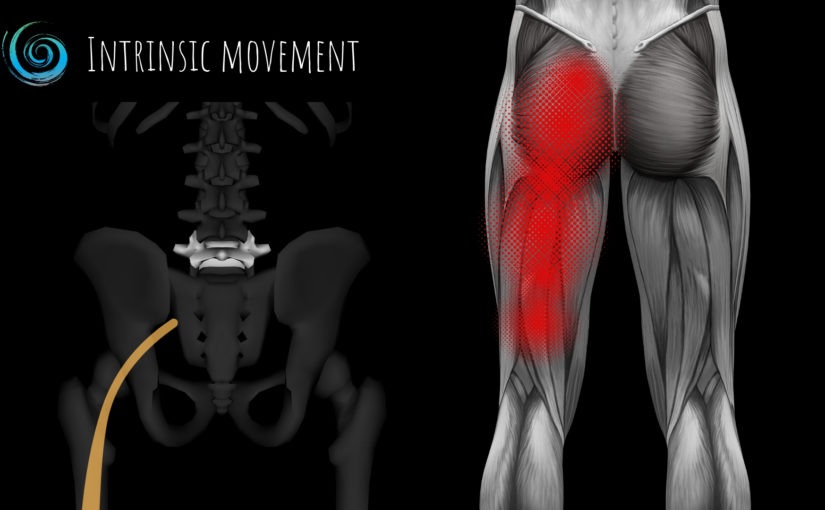Sciatica is characterized by shooting pain that radiates deep in the buttock region, down the back of the thigh and sometimes into the foot. It is caused by pressure or irritation to the sciatic nerve which innervates the legs.
The medical term for true sciatica is lumbar radiculopathy. As the nerves that join to create the sciatic nerve exit the spinal canal in the lumbar region. Symptoms can vary depending on where the compression or irritation is occurring.
What does sciatica feel like?
Sciatica can be felt as a sharp sheering pain like an electrical shock in the buttock and leg. Additionally, numbness, pins, and needles or a prickly sensation can be felt. Sometimes lower back pain and even weakness of the leg and foot may also be present.
Although the symptoms vary generally movement will make it feel worse as well as position changes such as sitting to standing. Symptoms can range from infrequent and mild, to often, quite severe and debilitating. Lying down is sometimes the only position of relief.
What can cause Sciatica?
Because sciatica is the symptom of another condition it is important to find out what increases or decreases the pain. This will help determine the possible cause.
Now we will discuss a few causes and the associated symptoms that they may present with.
The first four conditions below are true lumbar radiculopathies. Meaning that they affect the nerve at its root, where it exits the spine.
And the last condition presents with sciatic type symptoms but is not classified as true lumbar radiculopathy.
1.Degenerative disc disease
The area between each vertebra of the spine is known as Intervertebral discs (IVD). They act as cushions protecting the bone from damaging impact.
The IVD slowly wear down with age, they can also wear down as a result of poor posture or trauma. Consequently when this happens their suppleness, height, and shock absorbency qualities are reduced. Furthermore, worn IVD can lead to impinged nerves and also places more stress on the facet joints.
Pain from Degenerative disc disease usually feels worse when sitting, bending, twisting and lifting. And often reduces when lying down, standing and walking. As straightening the spine alleviates some pressure.
2.Herniated disc
A herniated disc is when the soft inner portion (nucleus pulposus) of a spinal disc squeezes out of the outer fibrous portion (Annulus fibrosis). This can compress or irritate the spinal nerves. When this happens in the lower back (lumbar) it causes sciatica symptoms.
If a herniated disc is the cause of your sciatica symptoms pain will feel worse with bending forward as it forces the nucleus pulpous to extrude backward on the spinal nerve.
3.Spinal stenosis
Spinal Stenosis is a narrowing of the spinal canal. The narrowing reduces space for the nerves to pass through. Spinal stenosis is often associated with aging mostly affecting people over the age of 50. Also associated with Conditions such as osteoarthritis. The narrowing develops slowly over time and will increasingly worsen.
Lumbar spinal stenosis can produce sciatic symptoms that increase with walking, then often relieved by sitting down, resting or leaning forward. Back pain may or may not be present.
4.Spondylolisthesis
Spondylolisthesis is basically when one vertebra of the spine slips forward on another. Each individual vertebra has an opening (vertebral foramen). These openings stack upon each other make up the spinal canal which the spinal cord passes through.
Essentially when one of the vertebrae slips forward over the one below it limits the space for the nerves. often resulting in impingement or irritation.
The most common place this occurs is in your last lumbar vertebra L5.
The pain will generally feel worse when standing or bending backward.
5.Piriformis syndrome
Piriformis syndrome is a disorder where the piriformis muscle that lies deep in the buttocks irritates the sciatic nerve. This muscle can become short and tight or can spasm due to muscle imbalances, poor posture, overuse, or fatigue.
The compression or irritation of the sciatic nerve results in shooting pain into the buttock and leg. Similar to the symptoms lumbar radiculopathy produces.
Symptoms of piriformis syndrome are often worse when walking up stairs or prolonged sitting. Carrying wallets in the back pocket’s putting pressure on the muscle and can aggravate symptoms.
Your Myotherapist can perform a range of muscle tests to determine if the piriformis is the cause of sciatic symptoms.
https://www.spine-health.com/video/piriformis-syndrome-video
What can you do if you are experiencing sciatica symptoms?
As you can see from above there is no one size fits all when it comes to sciatica. The cause of your sciatica symptoms will determine the appropriate treatment. Diagnosing the cause of sciatica is not easy and will require some investigation.
You will need to take note of what activities aggravate or relieve the symptoms. Knowing this information will give a clearer picture of the underlying cause.
Imaging such as x-rays and MRI’s may be required to get an accurate diagnosis.
With any of the causes above strengthing your core is necessary to help support your spine. Working with your GP and your myotherapist you can develop a plan to help reduce or eliminate your symptoms and manage this condition.
Left untreated impinged nerves can lead to irreparable damage.
If you experience bladder or bowel problems, severe abdominal pain, unexplained fever or altered sensation in the groin seek immediate medical attention.
Lower back pain and problems with bladder or bowels — get help immediately
Thanks for reading, I hope you have found this article to be useful.
If you have any questions or would like to book in a Myotherapy or massage session you can contact me via the below information.
